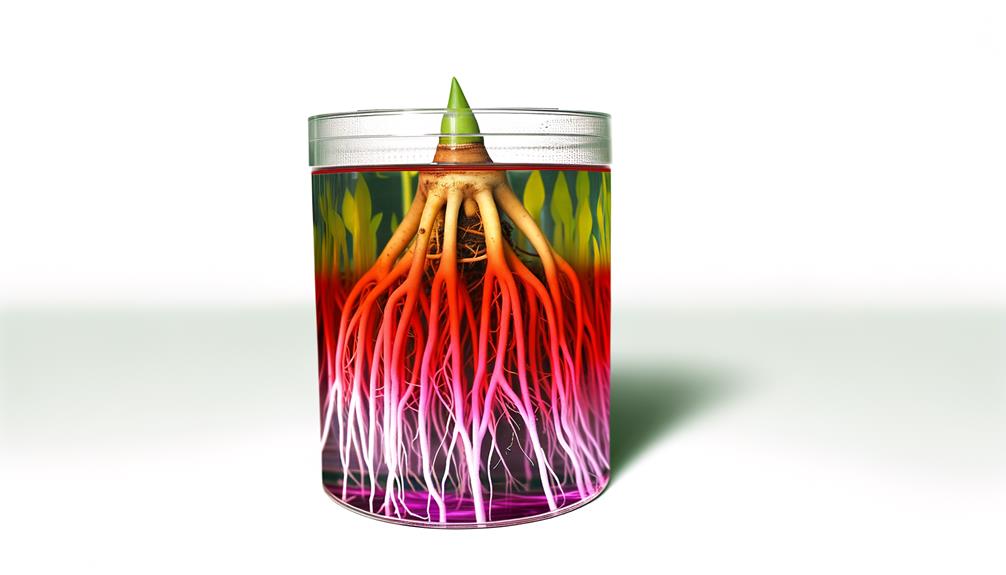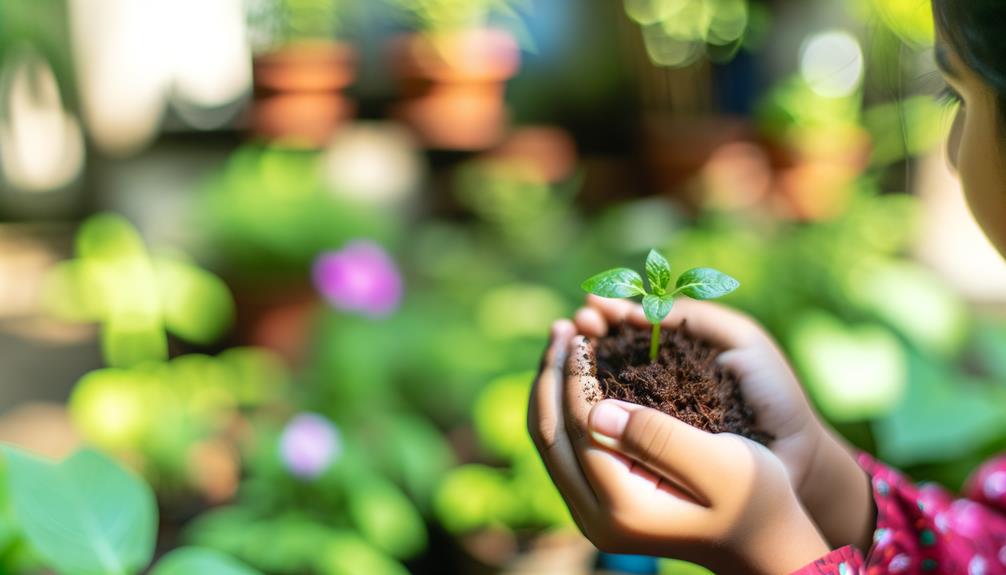Discover the wonders of plant life through five engaging experiments you can do at home. Set up a germination station to observe sprouting seeds, or create a sunlight-seeking shoebox to witness phototropism in action. Explore water absorption with thirsty roots in a clear container, and see nutrients traveling through celery stalks placed in colored water. Encourage your budding botanists to get their hands dirty with gardening activities that foster a love for plants and an appreciation for nature. By exploring these hands-on experiments, you'll gain a deeper understanding of the fascinating world of plant growth and adaptation.
Germination Station
One easy way to learn about plants is by setting up a germination station.
You'll need a clear container, paper towels, water, and seeds. Fold the paper towels and place them inside the container, then pour water until they're damp but not soaking wet. Place the seeds between the paper towels and the container's side, so you can observe them easily.
Put the container in a warm spot and keep the paper towels moist.
In a few days, you'll see the seeds sprout and grow. Notice how the roots develop first, anchoring the plant and absorbing water and nutrients. Then, the stem and leaves emerge, reaching for the light.
You can try different types of seeds and compare their growth rates and patterns.
Sunlight Seekers
Another fun experiment demonstrates how plants seek out sunlight. You'll need a shoebox, scissors, tape, and a small potted plant.
Cut a hole about 2 inches in diameter on one of the narrow ends of the shoebox. Place the plant inside the box at the opposite end from the hole, and close the lid. Position the box so the hole faces a sunny window, and leave it for a few days.
When you open the box, you'll see that the plant has bent towards the hole, seeking out the sunlight. This phenomenon is called phototropism, and it's how plants optimize their growth by orienting themselves towards the strongest light source.
You can try variations of this experiment by using different sized holes or multiple holes on different sides of the box. You can also test how different plant species respond or how the plant's growth changes when you rotate the box.
This simple experiment is a great way to observe plants' adaptations and to spark curiosity about the natural world, even when you're stuck indoors.
Thirsty Roots

Plants' root systems are remarkably efficient at seeking out and absorbing water from their surroundings. You can observe this process by conducting a simple experiment. Fill a clear container with water and add a few drops of food coloring. Cut a piece of paper towel into a strip and fold it in half lengthwise. Place one end of the strip into the colored water, letting the other end hang over the edge of the container.
Watch as the water travels up the paper towel, demonstrating how plants' roots draw moisture from the soil.
To further explore the power of roots, try growing a plant in a clear container filled with soil. As the plant grows, you'll see its roots spread throughout the soil, seeking moisture and nutrients.
You can even experiment with different watering techniques, such as watering from the bottom or top of the container, to see how the roots respond. By understanding how plants' roots work, you'll gain a deeper appreciation for the incredible adaptations that enable them to thrive in various environments.
Traveling Nutrients
Now that you understand how roots absorb water, let's explore the fascinating journey of nutrients within a plant. You'll need a stalk of celery, a glass of water, and food coloring. Cut about an inch off the bottom of the celery stalk and place it in the glass of colored water.
Over the next few hours, you'll witness the celery's leaves and stem gradually change color as the dyed water travels up the stalk. This experiment demonstrates how nutrients move through a plant's vascular system.
The xylem, a network of tubes within the plant, transports water and dissolved minerals from the roots to the leaves and other parts of the plant. The colored water represents the nutrient-rich sap that's pulled upward by the plant's natural processes, such as transpiration and capillary action.
As the colored water reaches the leaves, you'll observe a stunning visual representation of how plants distribute essential nutrients throughout their structure. This efficient delivery system enables plants to grow, develop, and produce the food they need to thrive, showcasing the incredible adaptations that allow plants to flourish in diverse environments.
Budding Botanists

Nurturing a love for plants in children can lead to a lifelong appreciation for the natural world. Encourage your kids to become budding botanists by involving them in gardening activities. Let them choose their favorite plants and teach them how to sow seeds, water, and care for their growing greens. They'll develop a sense of responsibility and pride as they watch their plants thrive.
Engage your children in learning about plant anatomy and the role of each part. They can create a plant journal, sketching their observations and noting growth progress.
Introduce them to the fascinating world of pollination by observing bees and butterflies in action. Take nature walks to identify different plant species and discuss their unique adaptations.
Inspire your kids to explore the incredible diversity of plants through books, videos, and visits to botanical gardens. Encourage their curiosity by helping them conduct simple experiments, such as testing the effects of light or soil types on plant growth.
Frequently Asked Questions
How Long Does It Usually Take for a Seed to Germinate?
It depends on the seed type, but most take 1-2 weeks to germinate. Some sprout in days, while others need a month or more. Factors like temperature and moisture also affect germination time.
What Are the Best Conditions for Optimal Plant Growth?
You'll need proper soil, adequate water, and sufficient sunlight for peak plant growth. Guarantee your plants receive the right nutrients, and protect them from extreme temperatures. With care, you can create ideal growing conditions.
How Do Plants Absorb and Transport Water From Roots to Leaves?
You've likely wondered how plants move water from roots to leaves. They use a combination of root pressure, capillary action, and transpiration to absorb and transport water throughout their structure.
What Essential Nutrients Do Plants Need to Survive and Thrive?
You know plants need sunlight and water, but they also require essential nutrients from the soil. These include nitrogen, phosphorus, and potassium, which help plants grow, develop, and produce flowers, fruits, or seeds.
How Can I Encourage My Child's Interest in Plants and Gardening?
You can nurture your child's curiosity about plants by letting them help with gardening tasks, reading books about plants together, visiting botanical gardens, and doing simple experiments to learn how plants grow and thrive.
Conclusion
You've just scratched the surface of the incredible world of plants! With these hands-on experiments, you're well on your way to becoming a budding botanist. Keep exploring, observing, and asking questions about the green life around you. There's always more to discover in your own backyard or even on your windowsill. So, keep growing your curiosity and see what other fascinating plant secrets you can uncover. Happy experimenting, and may your green thumb flourish!




Leave a Reply